Using Full Spectrum LED Grow Lights For Indoor Gardening
As an Amazon Associate and member of other affiliate programs, I earn from qualifying purchases.
You’ve heard of using grow lights to start your seeds or for growing marijuana, but you can use full spectrum led grow lights to grow any crop indoors. In fact, we’ve been using them to grow tomatoes year-round since 2015.
Choosing the best LED grow light for your situation can easily become confusing with all the options out there. And you have to be careful to choose a light that delivers both the quality and quantity of light you need for your plants.
In this post, I’ll discuss not only how to choose the best led grow light, but I’ll show you the top rated grow lights on Amazon and how to use them for indoor gardening year round.
There will be a bit of technical discussion, but only to the extent that you need to understand for indoor gardening. Bear with me. It’s important to understand a few buzz words in order to be a smart shopper.
So let’s get started, shall we?
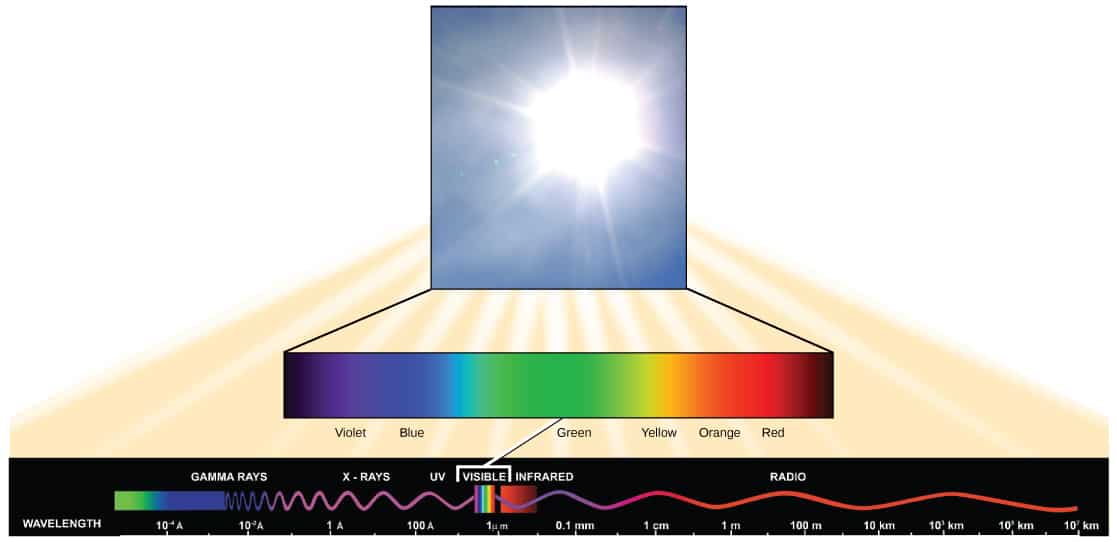
What does full spectrum mean?
Technically, full spectrum light would include all wavelengths of light that are emitted from the sun – this would include all wavelengths of visible and invisible (UV & Infrared) light.
Plants only use a portion of the visible light spectrum for photosynthesis. The portion of visible light that plants use for photosynthesis is referred to as PAR, so for the purposes of a grow light, “full spectrum” simply means that the light emitted covers the majority of the PAR range.
While our eyes are most sensitive in the middle of this range, plants are more sensitive to the ends of the visible spectrum. Plants contain chlorophyll and other pigments that absorb certain wavelengths of light. By absorbing the energy from the light wavelengths, they can create energy to fuel plant growth.
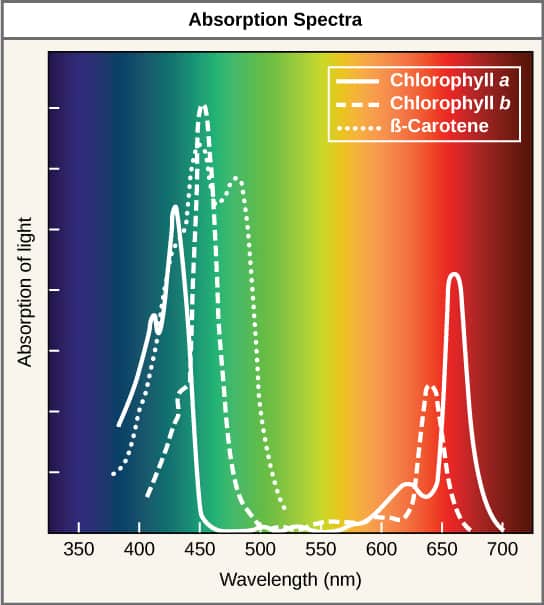
As you can see in this image, pigments from plants absorb light at the ends of the spectrum while they don’t take up as much from the center.
It’s worth mentioning that there is no industry standard or regulation for the use of the term full spectrum for grow light manufacturers, so be sure to look over the specs of any item before you purchase.
Red/blue full spectrum led lights
Second Gen LED lights have given up the red and blue diodes for new white diodes that are supposed to give a more full spectrum of light. Consider this one from Spider Farmer.
With >80% 5 star reviews on this light, I am really tempted to order some for our grow room. These lights are made to work well in chains so they’re great for setting up larger growing areas.
Plus, the purple effect from most lights gets annoying to me, so I really want to try this one out.
Do you need full spectrum grow lights?
If you’re just starting seeds for the spring, then no you don’t need a full spectrum light. However, plants that are grown indoors for their whole life do need a light that can provide wavelengths across the majority of the usable spectrum (PAR).
When lights are described as having cool tones, they lean toward the lower end of the spectrum and have blue undertones. These wavelengths around 400-450 nm encourage vegetative growth.
On the other end, warm grow lights have more red undertones, and the wavelengths tend toward the higher end of the spectrum from about 625-675 nm. These wavelengths encourage blooming and fruit production.
You’ll want to provide both blue and red wavelengths to your plants to encourage them to get bigger and make flowers/fruit.
Just as important as understanding wavelengths, is understanding how the intensity of a grow light will change based on where it’s located in relation to your plant.
That means you have to consider both the height of your light and whether your plant is located centrally or towards the edge. When you’re shopping for an LED grow light, you may see a note about the maximum growing area.
Depending on the type of plant you’re growing, you may need to move your light closer for better production which will cause your growing area to be smaller. As an example, take a look at the figure below:
This image demonstrates how the height of your light affects the amount of PAR (useable light) available to your plants. As it gets further away, the light is distributed over a larger area, and the brightness (lx=lux/lumens) of the light is diminished.
For the purposes of those of us actually growing tomatoes under these lights, there’s is much less available data for ideal indoor growing conditions. We can guess that response to light is similar to that of other flowering plants.
If you want to nerd out and start calculating the actual PAR in your indoor garden and running experiments on its effects on flowering and production, here’s some info to get you started.
Best full spectrum led grow lights for small spaces
If you’re looking for a small led lamp that will supplement houseplants, countertop microgreens, or for starting seeds, there are some really handy styles that are easy to place anywhere with the desk clip.
Why choose LED grow lights?
Led lights are the best choice because they produce less heat, use less electricity, last longer, won’t shatter, and are easy to set up and move.
Other types of grow lights include fluorescent and HID designs. Fluorescent lights using regular shop lights, work great for seedlings and plants with low light requirements. But they aren’t sufficient for flowering and fruiting vegetables. More efficient CFL and T5 grow lights are an affordable option, but they don’t offer as full a light spectrum.
HID stands for High-Intensity Discharge, and there are a few different types. Compared to LED though, HID lights are more difficult to set up, generate more heat, and can be quite expensive.
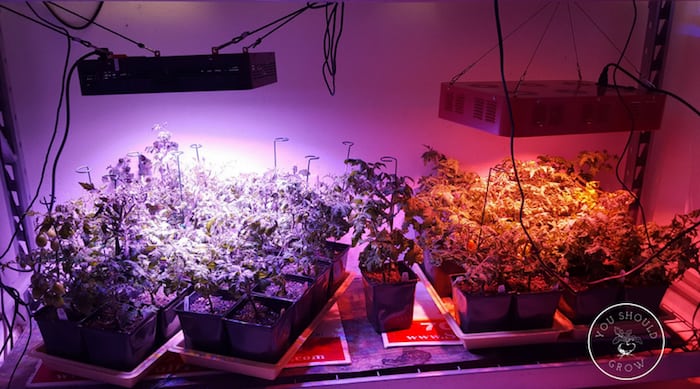
Tips for growing indoors under led lights:
Have a plan before you purchase.
You need to think about your set up before you start purchasing items.
- How big is your space? Will you dedicate a whole room, a corner of your room, or just a spot on your table?
- What kinds of plants do you want to grow?
- How many plants do you want to grow?
- Be sure you give yourself enough space and be realistic about what you can maintain.
When you have an idea for how much space you have for indoor gardening, then you just need to decide whether you will grow on racks or on the floor. Finding a way to hang lights is easier if you use racks like this, but you can quickly run out of space for full-grown tomatoes. We set our pots on the floor and suspend lights from hooks in the ceiling.
Don’t forget to think about watering. It can be more challenging to water indoor plants without making a mess. Set your pots on trays to keep water from dripping onto your floor.
If you’re growing tomatoes, choose your variety wisely. Large indeterminate plants will require more work with pruning and tying up. Compact plants like dwarves and micros are easier to maintain indoors.
Other supplies you’ll need:
- Pots, potting soil, fertilizer, and plants
- Table, rack, or floor space for plants
- Clips and supports to position grow lights
- Timer for turning light on/off
How long should you leave the grow light on?
You should not leave your grow light on 24/7.
Plants do need some rest time for healthy growth. The amount of time you choose to leave your light on/off will vary depending on the plant you’re growing and your goals for the growth of that plant.
For most fruiting vegetable plants like tomatoes and peppers, full spectrum LED grow lights should stay on for a minimum of 14 hours, and it needs to be dark for a minimum of 6 hours every day. Remember, you’d like to try to mimic natural sunlight as much as possible.
What about sunlight that comes in through doors and windows?
You don’t have to worry about blocking any other sources of light when you’re growing tomatoes indoors. The natural light that comes in through doors and windows does not affect the production of fruits and vegetables grown indoors.
Other considerations for indoor gardening
When you’re growing indoors, you need to provide adequate ventilation in your grow room. An air-conditioned room is probably enough, but you might also choose to set up an oscillating fan to make sure the plants get fresh air and to help pollinate the flowers.
Pests are usually less of an issue when gardening inside, but if you do end up with a problem it can be frustrating to address. The most common problems you’ll encounter indoors are fungus gnats and white flies.
Good ventilation, careful watering, and sticky traps are good way to control these pests. Powdering your plants with DE is also helpful.
Overall, indoor gardening is not much different from growing outside. It just takes some work to make sure you’re keeping your plants happy under artificial light. Keep a close eye on your plants and watch their leaves for signs of stress like turning yellow or brown.
Under red/blue lights, it’s normal for your plants to be a darker green color and they may turn purple on the bottom sides of the leaves. Don’t worry about color changes as long as the leaves are otherwise healthy.
Plants that are easy to grow indoors under lights:
When you’re choosing plants for indoor gardening, your first consideration is space. Larger vining plants like watermelon, winter squash, cucumbers, etc would be much harder to manage.
Here are some suggestions for plants that are easier to manage indoors.
- Tomatoes (compact varieties)
- Peppers
- Eggplant
- Bush beans
- Greens (lettuce/spinach/etc)
- Root crops – carrots, beets, turnips
- Microgreens
- Potatoes
- Broccoli
- Cauliflower
- Kale
- Herbs
Have you grown plants under LED lights?
Share your experience with us in the comments below!
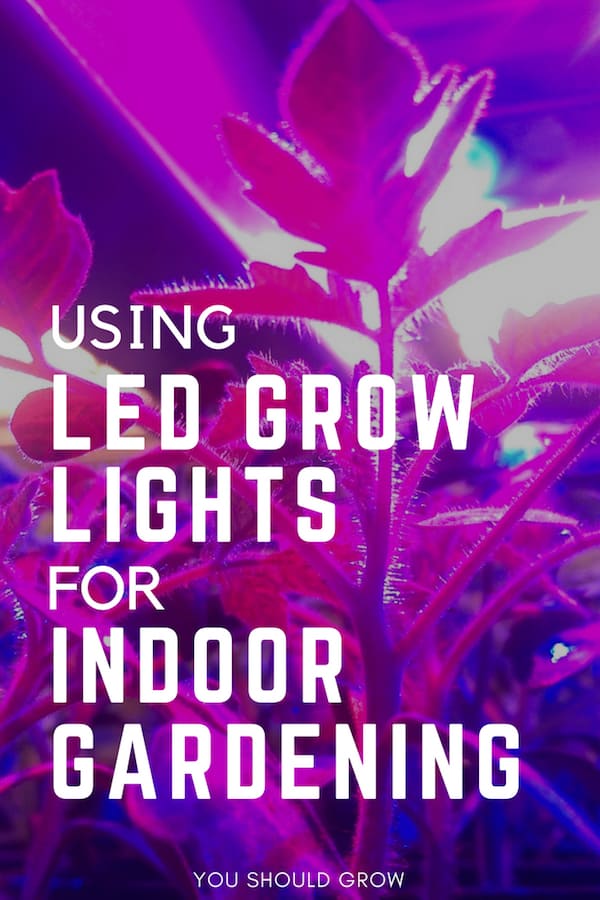


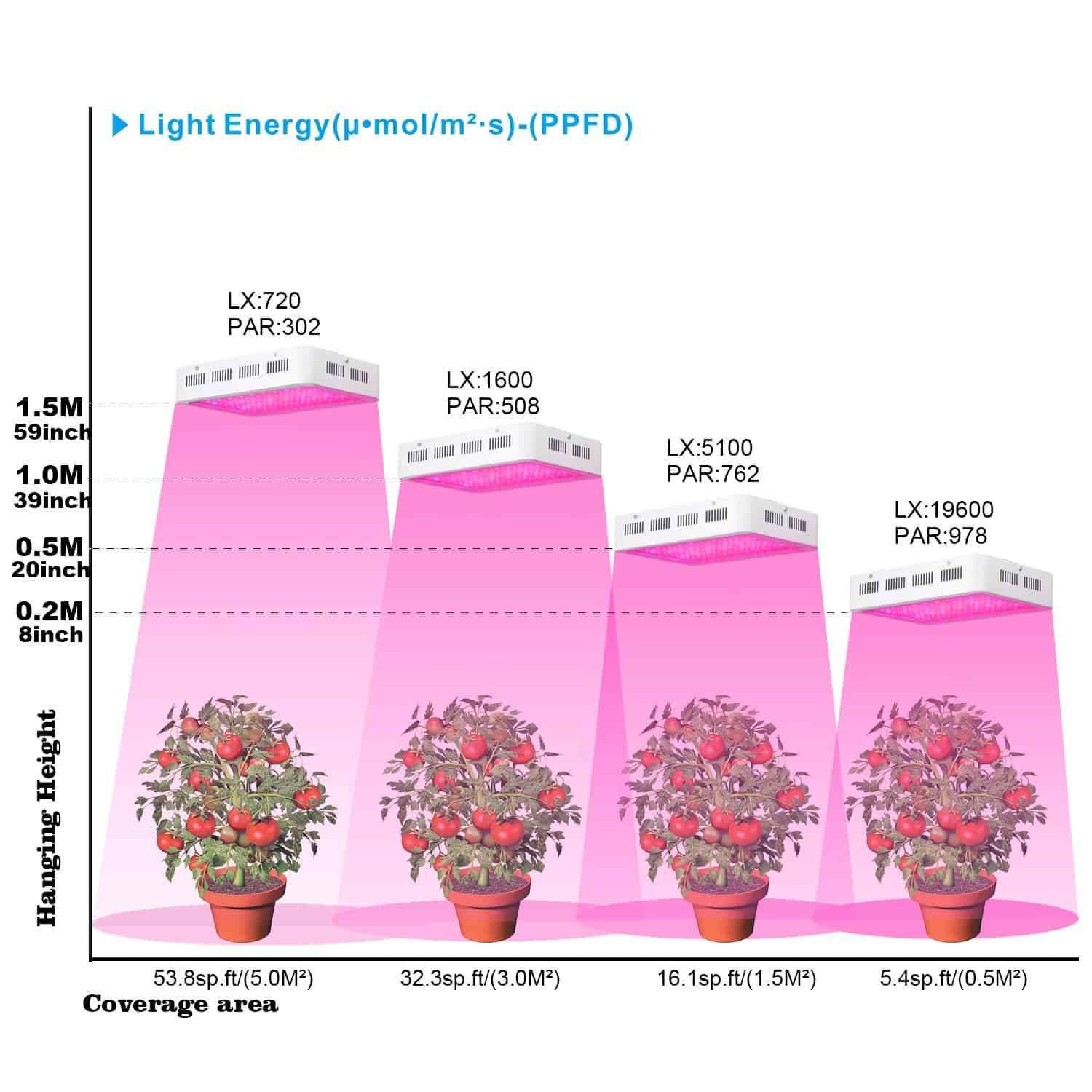
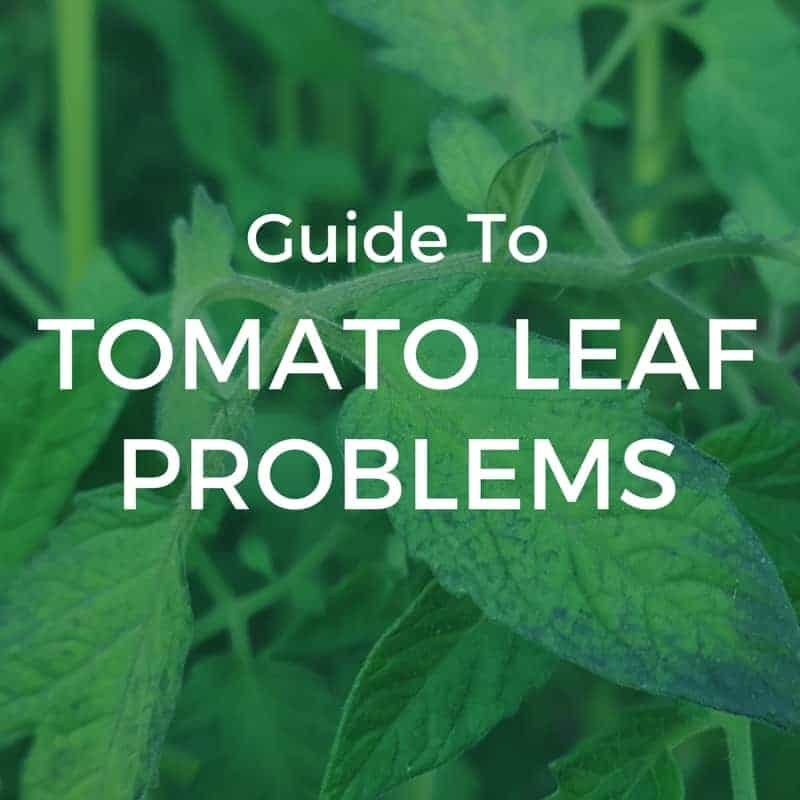
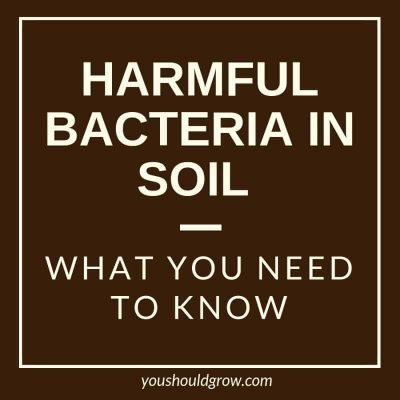
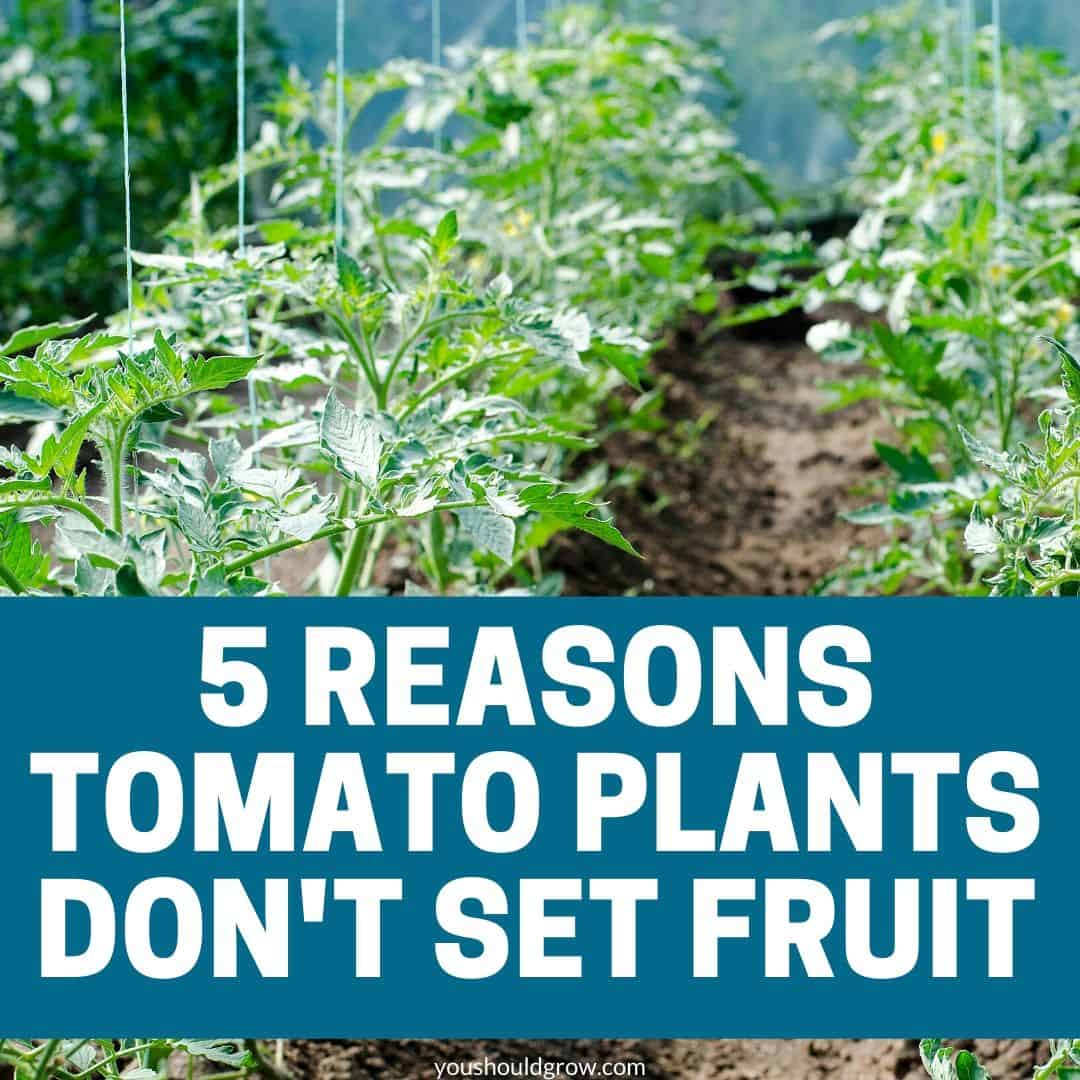
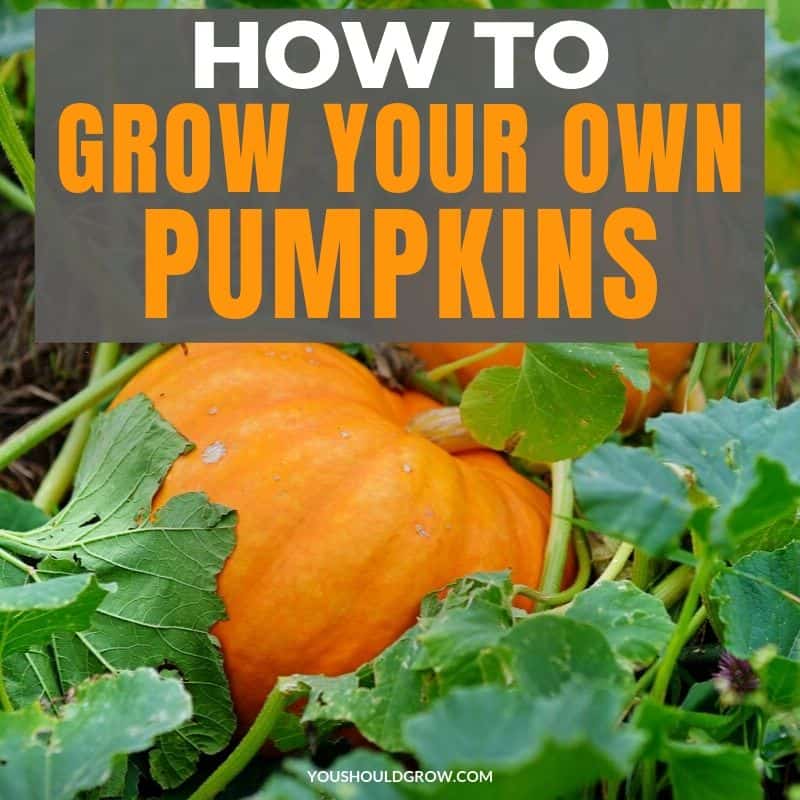
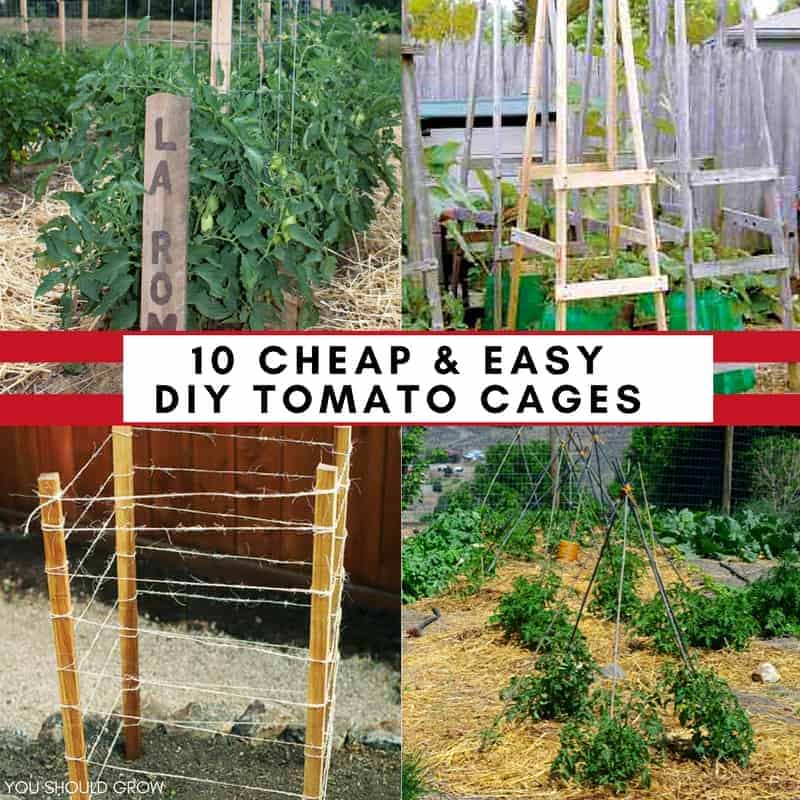
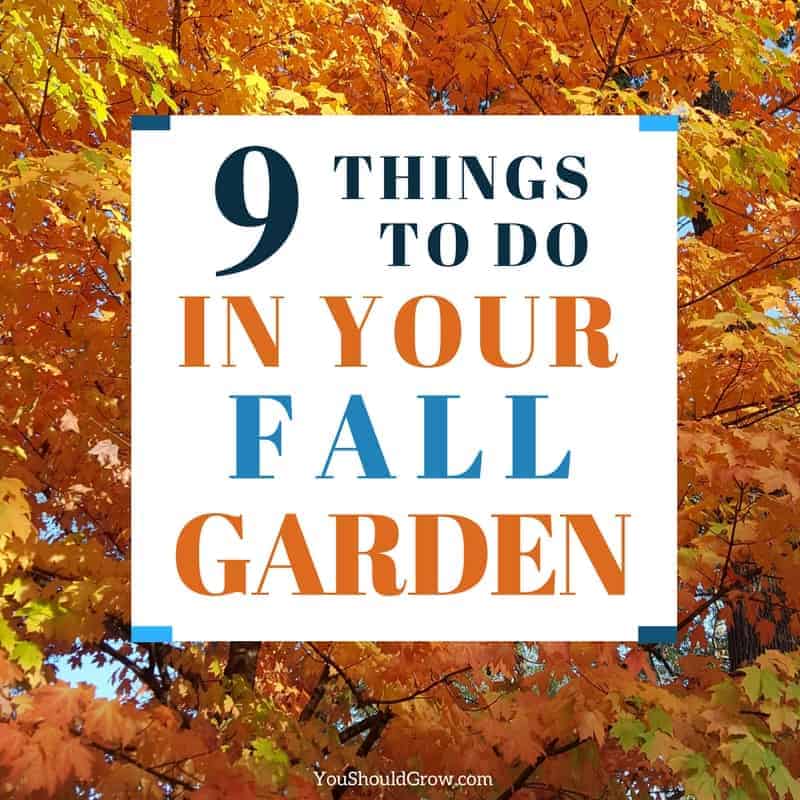
Nice analysis about full specitrum led grow lights. Thanks for your suggestion. Do you recommend type for the $500 budget? Thanks.
Hi, Thomas! Thank you. I honestly haven’t tried any grow lights in that price range. On the expensive end, California Lightworks gets good reviews.
California Lightworks now has a great light in the $500 range. It is the SolarXtreme 500 and costs just under $500. I haven’t used it myself, but I have had a chance to use the smaller 250 and it is amazing.
You can try this light: https://www.bestvaled.com/collections/bat-series-led-grow-lights/products/bestva-bat-w600-dimmable-led-grow-light-for-your-indoor-grow-1680pcs-samsung-lm301-diodes-5-5ft-coverage-by-wifi-control
Can you tell me what I should look for in terms of heat production. I need a light that is small for a tabletop water garden/fountain with a bowl lotus, that must be kept at 65-70 degrees F.
Thanks!
I’m not sure if I’m leaving my lights on too long or not enough!!
What grow light would you recommend for seed starting vegetables? I don’t need it for anything but getting them started early enough & keeping them strong (not leggy) prior to being able to plant them outside. Everything will be grown outdoors & I’m on a budget so I don’t want to invest in more than I need. Thanks in advance!
Mine are on auto, so they are 16 on and 8 off…seems to be working. My plants are thriving.